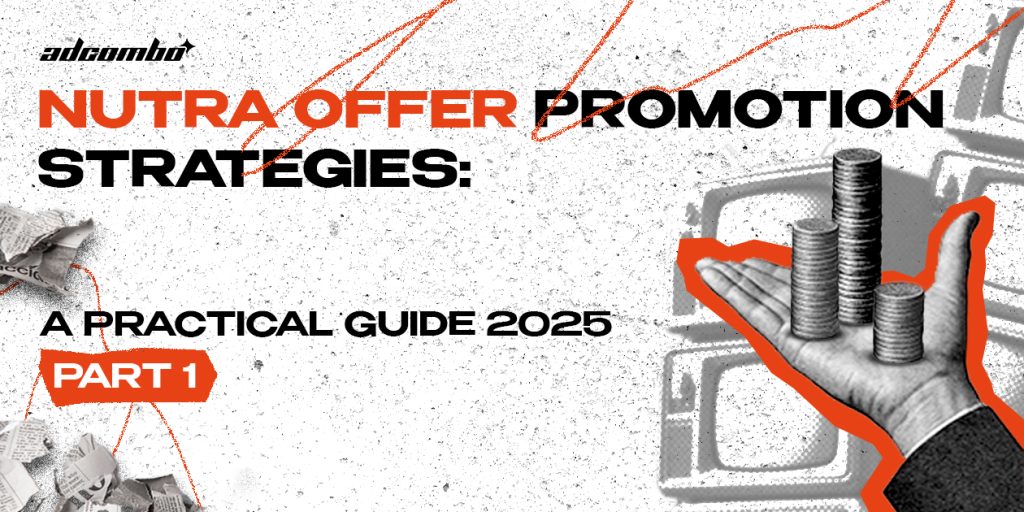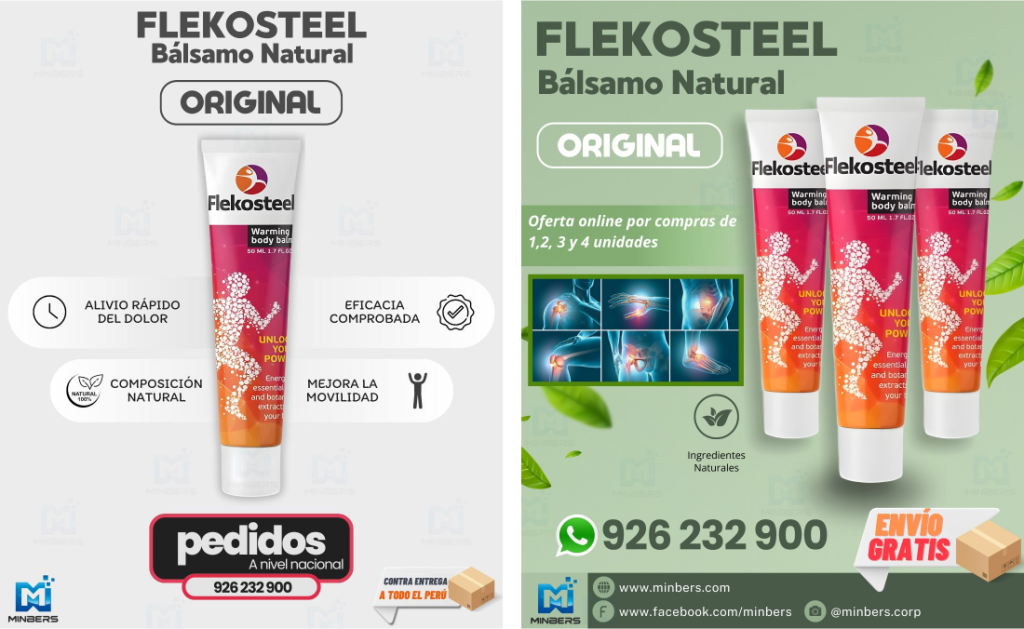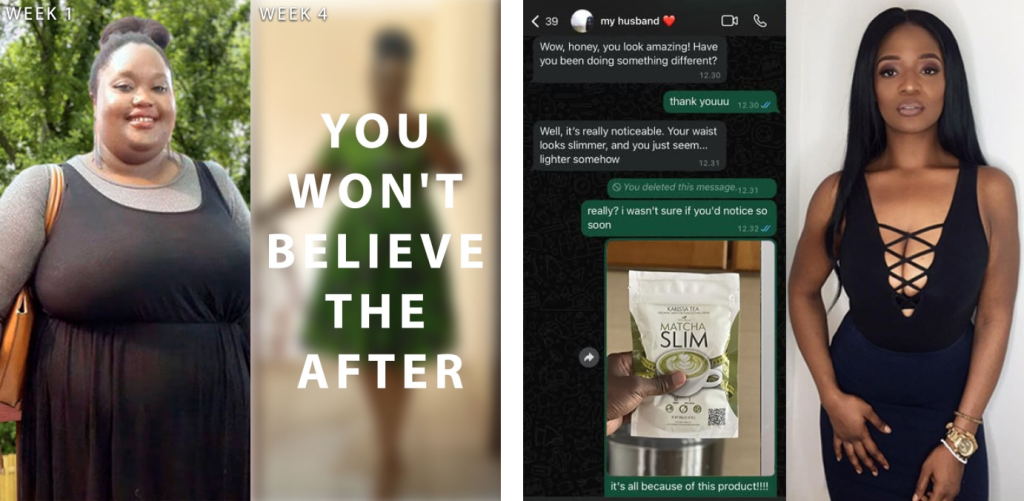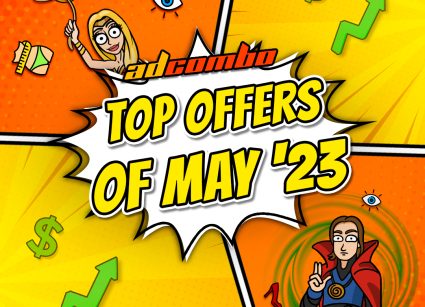-
Nutra Offer Promotion Strategies in 2025: Profiting with Classic Approaches | Part 106.6.2025Reading Time: 7 minutes

In 2025, nutra affiliate marketing remains one of the most stable and profitable verticals. Still, with increased competition and tighter advertising rules, scaling has become more challenging. Algorithms are restrictive, moderation is aggressive, and users are more cautious.
In this series, we walk through the top 9 proven strategies for nutra step by step:
- Matching offer categories
- Audience targeting tips
- Creative and pre-lander recommendations
In Part 1, we cover the three marketing pillars:
- Product-based strategy— when the product sells itself and you simply showcase it properly.
- Real-life story — when a character and transformation outperform any banner.
- News-style strategy— when your ad becomes an info-worthy news event.
We explain how to apply these methods on Facebook and Google in 2025, which geos they perform best in, which offers they suit, and how to avoid ending up with zero ROI.
Product-Based strategy
This creative focuses on the product itself — typically showing the nutra offer packaging up close with key product benefits highlighted. It’s the closest thing to classic promo: the user immediately sees what’s being sold and understands what the landing page will cover. Often used in whitehat campaigns, without flashy triggers, and suitable for landers with little or no warm-up. Ideal for long-term campaigns where traffic quality and stability matter.

💡 Creatives sourced from TyverSpy.
Want to test the service for free? Message @Misha_Tyver on Telegram with the phrase ADCOMBO TRIAL. And when you make your first payment, get 20% off with the promo code ADCOMBO.Product Categories
The product-based strategy is versatile, but it works best with visually appealing or recognizable packaging:
- Weight loss & detox: tea boxes, slimming capsules, detox drinks
- Beauty & anti-aging: creams, serums, masks — must show attractive jar, logo, volume
- Vitamins & supplements: immune boosters, eye support
Less effective for intimate products (potency, enlargement) — packaging is often too neutral to convey effects. These niches perform better with associative imagery or personal stories.
Where and How to Use
This strategy is effective where audiences are familiar with online shopping and prefer transparent product presentations. It resonates with users who don’t need “magic,” but want to clearly understand what they’re buying.
Ad platforms generally view it as neutral and acceptable — especially if the creative avoids shock content or bold claims. Visuals are crucial: clear pack shots, benefit list, and concise copy tailored to the platform format.
In some channels, plain product images might underperform on CTR versus other formats, but they attract more motivated users. Note: product imagery and medical themes may be subject to local (e.g., EU) or platform-specific regulations — check the rules beforehand.
Creative and Prelander Tips
In 2025, users are flooded with flashy ads — a plain product image can get lost. To make product-based creatives effective:
- High-quality visuals: HD photo/render on neutral background. In just 13 ms, the brain decides if an image is appealing — it must be sharp and “tasty.”
- Show scale/details: If size matters, include familiar objects for reference (e.g., cream next to a handbag). Reveal contents (capsules, liquid, cream color) to build trust.
- Text highlights: Add 2–3 key points: natural formula, certifications, discounts, etc.
- Prelander: Use a product card or mini review page — one-pager with description, ingredients, reviews. This boosts the product-focused message and works well on FB/Google.
Relevance in 2025
This method lost some popularity due to lower CTRs — plain visuals seem dull next to loud creatives. But data shows product-based ads often convert better — the users who click are more purchase-ready.
Still effective in 2025, especially for branded offers with recognizable packaging. Combine with other elements like expert commentary or usage results for better impact.
Real-Life Story strategy
One of the most natural and persuasive methods is telling a story where the user sees themselves or their aspirations. These are usually personal journeys: “A woman lost 20 kg in a month without the gym,” or “A retired man healed his joints and runs again.” These stories appear as blog posts, testimonials, or dramatic case studies (“grandma’s secret,” “method doctors hide”).
The core is the hero’s journey: had a problem, suffered, discovered the solution (your offer), is now happy and shares the experience. This builds emotional connection and trust — users think, “If it worked for them, it might work for me.”

💡 Creatives sourced from TyverSpy.
Check out service updates in the channel @tyver_enAfter the click: the prelander is styled as an interview or blog post told in the first person. This format often blends with the news or celebrity format (e.g., a known figure is the story’s subject).
Best Vertical Fits
Stories work great where large, emotional audiences want transformation:
- Weight loss: countless “100kg to 60kg” stories, “ex-soldier dropped weight to save his heart”
- Beauty/anti-aging: “looked 50, now looks 30,” “how I erased wrinkles in 7 days — a diary”
- Potency: e.g., “Man almost lost his marriage due to issues but found a solution — now back to normal in bed”
- Health (diabetes, blood pressure, joints): case studies like “Teacher from Palermo cured Type 2 diabetes without expensive meds.” Stories with failed official treatments and natural solutions bring hope (albeit risky on ad platforms).
- Other examples: smoking/alcohol recovery, caring for relatives — e.g., “Son found a way to heal disabled father” — works well for joint offers.
Advertising Considerations
This strategy is universally effective — just tailor the character and details to the local culture and values. Add regional flavor.
Story format works great via prelanders (narratives, interviews, diaries), with creatives using teaser-style photos and intriguing headlines. It often feels native.
Some platforms tolerate storytelling if it’s subtle, emotional, and doesn’t overpromise. Include disclaimers: “Individual results may vary.” e.g., “Testimonials: How people improved vision with… (read blog).” No outrageous claims in the ad itself.
Human-interest stories also adapt well to video — short narratives/interviews — especially for organic or testimonial warm-ups. Not ideal for direct paid ads due to compliance.
Creative Tips for 2025
- Believable fiction: Even if made up, present the story as real — include name, age, location, real-sounding details (“lost 18kg,” “sugar dropped from 12 to 5”).
- Interview or diary style: Structure helps readability — e.g., Day 1: started the course… Day 7: lost 3 kg…
- Emotional hooks: Story should evoke empathy — “I tried every diet, cried at night over my weight, until fate saved me.” Or “Doctor said surgery would cost $10k — I lost hope…”
- Soft CTA: End with a subtle nudge — “The hero shared a link,” or “I ordered the product here with a discount.” Pretend it’s part of the story, not a sales pitch. “Hope my experience helps others.”
In 2025, people still fall for good stories — but they’re smarter at spotting fakes. So quality matters: generic stories convert worse. Update them regularly, add unique plots (e.g., priest or war vet as the hero). Mix with news (published in local paper) or expert endorsement (doctor comments at the end) — this mix performs best.
News-Style strategy
The newsfeed strategy presents the ad as a news article or report. The creative and prelander are styled like media coverage of a discovery, event, or health breakthrough. This builds trust via a media format — people, especially older audiences, are used to trusting “news.”

💡 Creatives sourced from TyverSpy.
Check out service updates in the channel @tyver_enExecution
- Creative: Can resemble a screenshot of a news site or TV broadcast — anchor photo or famous doctor at a conference, with a channel logo (avoid real ones).
- Prelander: This is the actual “news” content — usually a fake article mimicking media style (with a fake publication name) or a neutral health news blog.
Structure: date, headline, strong lead paragraph, followed by a story about a scientist/organization discovering a new method. Includes expert interview, data, testimonials. Ends with: “The supplement is now available on the official site (link to landing).”
Best Suited Offers
Works best for “breakthrough” or “innovation” products:
- “Japanese tech guarding youth”
- “Colombian scientists discover fat-burning herb”
- “Bio-gel to restore cartilage from Israel”
- “European Viagra alternative — men love it”
Application
Use the news format when you need an official, sensational, or info-driven tone. Best for older users used to getting info from news/tv.
To avoid bans: don’t use real media names/logos. Everyone knows CNN doesn’t sell supplements. Build your own “news shell”: style the lander like a blog/interview/publication. Openly fake content is risky — in 2025, keep it believable.
Platforms vary — some allow this format if you follow authenticity guidelines. Others may reject if it feels like disinfo.
Tips & Nuances
- Credible tone: Write in journalistic, informative style. Avoid marketing lingo.
- News structure: Headline, date, optional subhead. First paragraph answers 5W (Who, What, Where, When, Why). Example:
“Sydney University researchers announced a new plant-based cartilage repair supplement that works in 30 days. Dubbed a ‘bio-prosthesis,’ it’s expected to hit the market soon.”
Then: expert quotes, more info, finish with soft CTA. - Neutral visuals: Avoid stolen logos/faces. Use generic images — lab, microscope, doctors — with text overlays to signal “news,” but stay in the gray area.
- Careful with crises: Avoid exploiting tragedies/pandemics — could violate platform rules or cause backlash.
Relevance in 2025
User trust is harder to win — media-style content builds it faster. But regulators are strict: fake news in ads is punishable in places like the US and EU.
So in 2025, the news strategy lives in a “soft gray zone”: avoid direct lies, highlight real trends, and present them believably. It works — but requires expert-level copy and platform knowledge. Beginners should start with safer formats to avoid wasting budgets or getting banned.
Conclusion
Product-based, storytelling, and newsfeed formats are the foundation. In 2025, each only works with proper execution. No warm-up or structure — no ROI.
Skip templates — build logical funnels: scroll-stopping banner → narrative prelander → lander with strong CTA. In Part 2, we’ll cover medical and demonstration-based strategy — how to hit your audience’s pain points hard. We’ll also highlight outdated methods and explain how to navigate platform restrictions.




Leave your comment